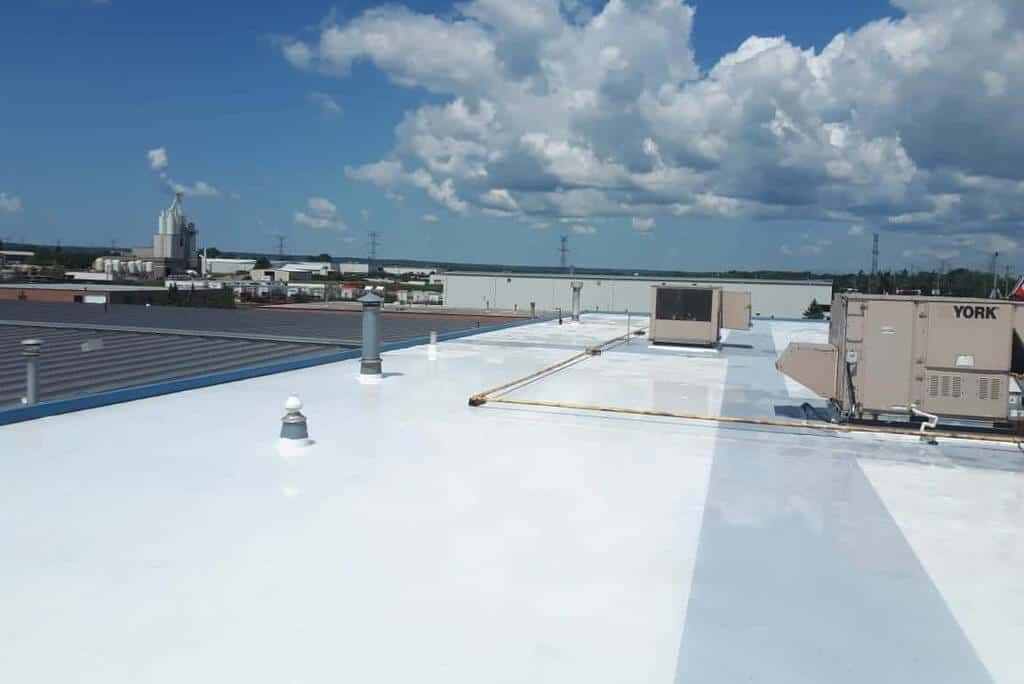Flat roofing has come a long way from the days when traditional felt was the only option available to Mississauga homeowners. While felt roofs were once standard, they often required frequent repairs and had a limited lifespan. Today, the market offers a wide variety of advanced flat roofing systems, each promising improved durability, style, and ease of installation. With so many choices, selecting the right flat roof for your home or project can feel overwhelming.
In this guide, we’ll break down the most popular flat roofing systems available in Mississauga, highlighting their unique benefits, drawbacks, and ideal applications. Whether you’re upgrading your home’s exterior or managing a commercial property, understanding your options will help you make the best decision for long-lasting protection and value.
EPDM Rubber Roofing

EPDM rubber roofing is the top flat-roof system due to its easy installation and 50-year life expectancy. Cadillac roofing is the best option out there to have this applied in your home. This single-ply membrane has made itself known as an ideal choice for both commercial, industrial properties, all while maintaining high-quality standards at great value prices. Made of paper and plastic, EPDM rubber has a 50-year life expectancy, which makes it an ideal choice for roofs.
It is easy to install as well; just roll out the sheet, cut where needed using scissors or a sharp utility knife, then secure it into place with nails or staples if necessary. The membrane can also resist punctures from heavy impacts such as baseballs, making it perfect for high-traffic areas like playground surfaces, because children are often running around at full speed even in their games!
Pros: Made of durable materials that last long, so you don’t have to replace your roof every year – saving money on installation costs over time
Cons: Not suitable for foot traffic
GRP Fibreglass Roofing

Fibreglass roofs are a popular choice amongst homeowners and tradesmen. They have incredible strength, durability, and resistance to wear and tear that make them last for decades or more with little maintenance.
Fibreglass is supplied in component form as two liquids: resin mixed with a hardener, which forms the base layer of your roof; chopped strand matting can be installed over this before applying fibres on top to give you beautiful results every time!
One of the best options for durability and a modern look, we recommend this product if you don’t mind not being able to do the installation yourself. While its tough and impact-resistant finish makes it suitable for foot traffic, it is prone to cracking due to its hardness, which means that installing one by yourself can be challenging.
Polyurethane Liquid Roofing

Interest in polyurethane liquid roofs is growing, and they are becoming a popular option because of the convenience: installers can apply them directly over an existing roof surface like felt or GRP. These liquids fit winter weather conditions as well, since there’s no waiting period for application.
The best benefit of spray-on felt is its single-coat application. This means that there are no long waits for it to dry, and you don’t have to mix anything together either! Another major plus is the high tensile strength this product offers; your roof will be protected from any harsh weather elements.
The main downside with these types of roofs has more to do with how they look rather than what they can protect against—you might not get a very aesthetically pleasing finish if done incorrectly on some surfaces (such as metal). Also, many people question whether or not their life expectancy matches up to other products on the market today.
Liquid Repair Systems

Repair liquids come in a single tin form and are easy to apply. They’re perfect for when you just need something done quickly but on an extremely short budget. These repair liquids can be applied under most weather conditions, and they’re fibre reinforced so that the roof lasts longer than using regular liquid repairs would have allowed!
Liquid Repair Systems provides a quick and cheap fix for any leaky roofs. The waterproofing sealant can be applied in damp conditions, making it useful when you’re trying to patch up your roof on rainy or snowy days.
This product is designed to work with most types of roofs, including shingle, metal sheeting, flat asphalt surfaces that are not concrete floors. Liquid Repair Systems provide instant protection from leaks after installation, but this product does wear off over time, so make sure the problem has been fixed before putting away your bucket and brush!
Conclusion
When you are trying to figure out the best material for your flat roof, it’s important that you take into consideration what is most important to you. For example, if the price is higher on your list of priorities than quality or durability then an EPDM rubber membrane would be a good choice because they can last up to 30 years and cost less money upfront compared with other materials like TPO reflective membranes which have the same longevity but come at a much more expensive price tag.
However, sometimes affordability isn’t as high in importance when considering factors such as energy efficiency or protecting against extreme weather conditions – this could mean investing in some sort of insulation product alongside whatever cover material chosen since heating costs will go down due to better thermal resistance properties.
In case you missed it!

